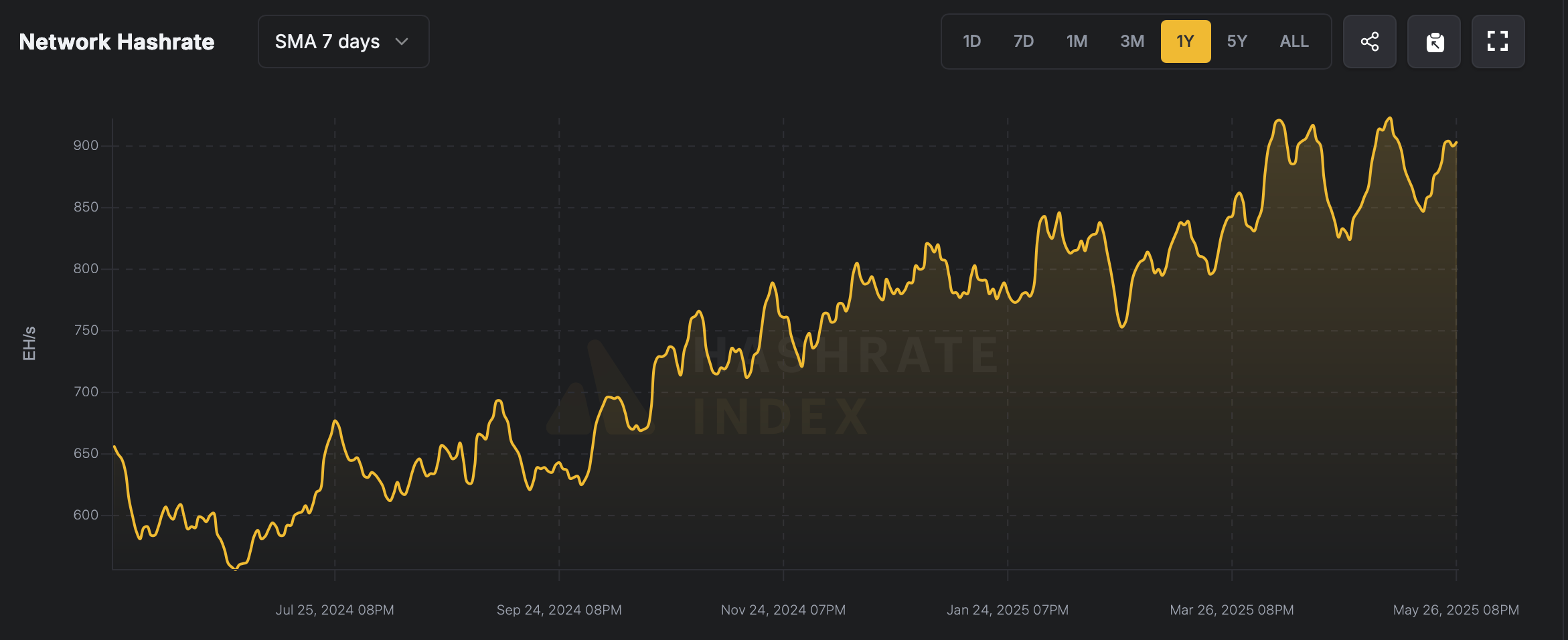At press time, the Bitcoin network hashrate is cruising along just above the 900 exahash per second (EH/s) range and according to current stats documented by hashrateindex.com, the United States leads prominently with 36.025% of the global hashrate.
Global Hashrate Showdown: U.S. Leads, Russia Climbs, China Hangs On
The U.S. is currently the most dominant mining region according to the second quarter 2025 heatmap hosted on hashrateindex.com. The web portal provides a bitcoin mining heat map that illustrates the global distribution of hashrate concentration, with distinct color gradients indicating the relative share of mining activity by country.
The U.S. is highlighted in the darkest orange, signifying it commands the largest portion of global bitcoin mining—over 36% according to the scale provided. Trailing the U.S. are countries such as Russia, Canada, and China—each shaded in strong orange tones. Russia has been making moves and commands 15.652% of Bitcoin’s global hashpower. China stands at 13.727% and Canada has around 2.919%, the bitcoin mining heat map shows.

Hashrateindex.com’s bitcoin mining heatmap Q2 2025.
The U.S.’s lead stems from a combination of factors, including abundant energy resources in states like Texas, favorable regulatory frameworks in some jurisdictions, and a robust infrastructure for hosting large-scale mining farms. Russia’s mining strength is largely attributed to its vast, remote regions with access to low-cost hydro and natural gas power.

Total network hashrate via the seven-day simple moving average (SMA) over the course of 1 year.
Canada similarly benefits from hydroelectric energy, particularly in provinces like Quebec and British Columbia, while China, despite regulatory crackdowns in recent years, still maintains a notable presence likely tied to covert or small-scale operations in areas like Sichuan or Xinjiang with cheap hydropower during rainy seasons.
Other countries with visible mining activity include Kazakhstan (2.484%), Paraguay (3.602%), UAE (3.727%) Oman (3.106%), and Iran (1.242%), shaded in lighter orange and yellow. Kazakhstan, in particular, had previously seen a spike in mining activity following China’s ban, leveraging its surplus coal energy before facing its own regulatory pushback. Iran has also embraced bitcoin mining at times, reportedly as a tool for circumventing sanctions, offering subsidized electricity to authorized operations.
Paraguay stands out in South America, drawing interest due to its abundant and low-cost hydropower from the Itaipu Dam. Conversely, large swathes of Africa, the Middle East, and parts of Southeast Asia appear in gray, indicating either negligible mining activity or unavailable data. These regions often face infrastructural challenges, high electricity costs, or political instability that hinder mining development.
The hashrateindex.com bitcoin mining heat map reinforces a clear geographic tilt toward North America, Eurasia, and select Latin American locales in the global distribution of bitcoin hashrate.













Leave a Reply